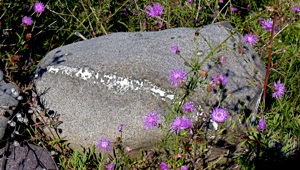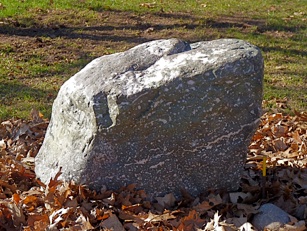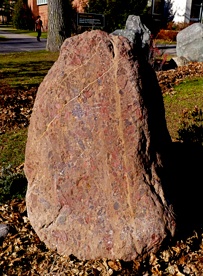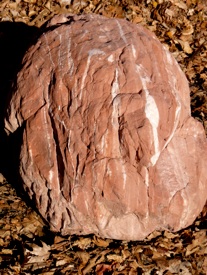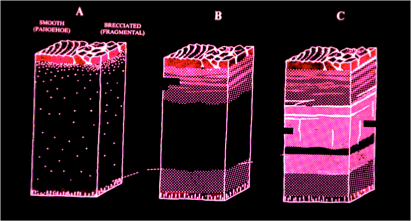the boulders were ripped out of their bedrock locations by the glacier and then deposited in random orientations. many of them are large enough to contain information that can be interpreted so as to allow a reconstruction of their orientation. Gravity and environmental factors affect rocks and the patterns of their formation. Lava flows and sedimentary rocks reflect environmental effects of gravity clearly. so we can design a successful exercise for students where we can ask the following questions:
-
1.although the boulders no longer reflect up and down with respect to the earth’s surface, for which of the boulders in the garden, can you infer the direction of up and down before their movement? Explain how for each.
-
2.Considering the various basalt boulders, where would you place them within the expected structural elements of a solidified lava flow?


